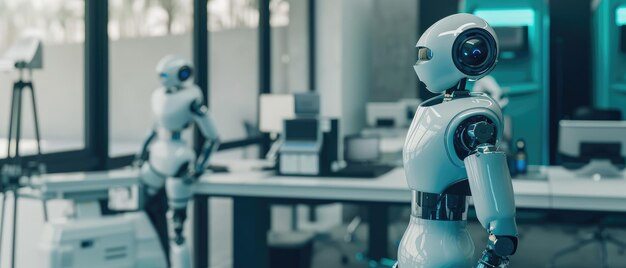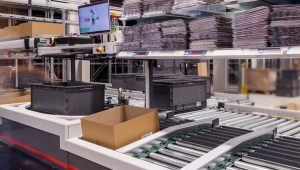
Robotic islands features, advantages, and quality standards
Robotic islands are a flagship of Industry 4.0, a reality made possible by the evolution in this field. A work cell where there are multiple programmable robots, a guarantee of success, and significant advantages in multiple business areas. They represent the ideal solution for the company that aims for truly high-performance production processes due to adaptable systems. They are equipped with high precision and a high degree of autonomy; therefore, no human intervention is required in a robotic island. Programmable robots within it ensure continuity in the production line, allowing the planning of activities, breaks, and personnel shifts. Through the configuration of new robotic plants, higher quality standards can be achieved. Flexibility, reconversion, adaptability, and simulation of different scenarios reduce the margin for error. Delays and delays that have unpleasant repercussions on production, including economic ones, are avoided.
Robotic islands, technology, and beyond
When we talk about and propose the concept of innovation, we are referring to something broader than the technical or technological datum. In today’s business world, rules and logic have changed, and priorities. In Industry 4.0, one cannot talk about automated production without mentioning smart factories. A smart factory is never really smart without robotic islands known for their high autonomy, high safety standards, and diversification of production sectors. Therefore, it is necessary to dwell on the wide range of robotic cells without which entire production sectors would not be automated. Wide is their range of action from assembly to finishing, via handling, palletizing, and welding. Obviously, the installation of automated machines includes CE certification, a manual containing coded instructions regarding switching on, switching off, maintenance, and parameter adjustment.
Flexible, reconvertible, certified.
Signing the certification is up to the person who designed the plant. In addition to certifications, there are specific manuals for each machine or plant. It’s natural, considering that robotic automation has value only if there is the possibility of applying it in different areas. From pharmaceuticals to automotive, aeronautics to fashion, a robotic cell performs tasks ensuring a precise and highly reliable result. Given the high dependence on increasingly efficient machinery, it is critical that robotic islands be flexible and reconvertible. This is a more than legitimate expectation, considering that companies often switch from one machining operation to another in a tight time frame, and thus speed and efficiency are essential. Thus, as the workpiece or new format changes, the robot is reprogrammed to avoid interruptions or delays. It is possible to create a robot cell from scratch by integrating specific machinery-such as a milling machine-with existing robots.

Safety Physical and laser barriers.
The ability to implement machinery and robots enhances and diversifies performance that would otherwise be difficult to achieve. To carry out efficient, secure tasks the robotic island must be designed to preserve workers’ safety. It is necessary to equip islands with protective devices to protect operators while loading or unloading parts, performing maintenance work, or taking action to put emergency measures in place. These are often operations that require preventive measures, so barriers are
- Physical, when surrounding the area with a metal structure by restricting access through alarmed doors that allow entry after the robot has been deactivated;
- Laser, thanks to devices with strategically placed laser sensors that are activated if there is a foreign body. This allows the robot to be slowed/stopped if the operator is close, and restarted when far enough away.
Robotic islands: further AI integrations, more solutions
The robot restarts from the last operation before the interruption. In the case of laser barriers there is the added advantage that they are not particularly invasive, given the absence of bulky metal structures. Implementation of AI techniques, and the provision of existing 3-D vision systems, could make the robotic islands even more autonomous. Thus, it is easy to envision a future scenario where the robot is able to read codes or locate components. Robotic islands may have a lot of benefits, yet some are more obvious. The positive repercussions are considerable, especially where the following comes into play
- – the need to optimize production while maintaining high-quality standards
- – operator well-being and health, given the safety of the environment in which they work
- – the importance of recovering the investment made
- – the choice of robots that can be integrated, whether anthropomorphic robots, SCARA, or cobots
Get in Touch
You will find yourself working in a true partnership that results in an incredible experience, and an end product that is the best.
Email us
support@gmail.com

